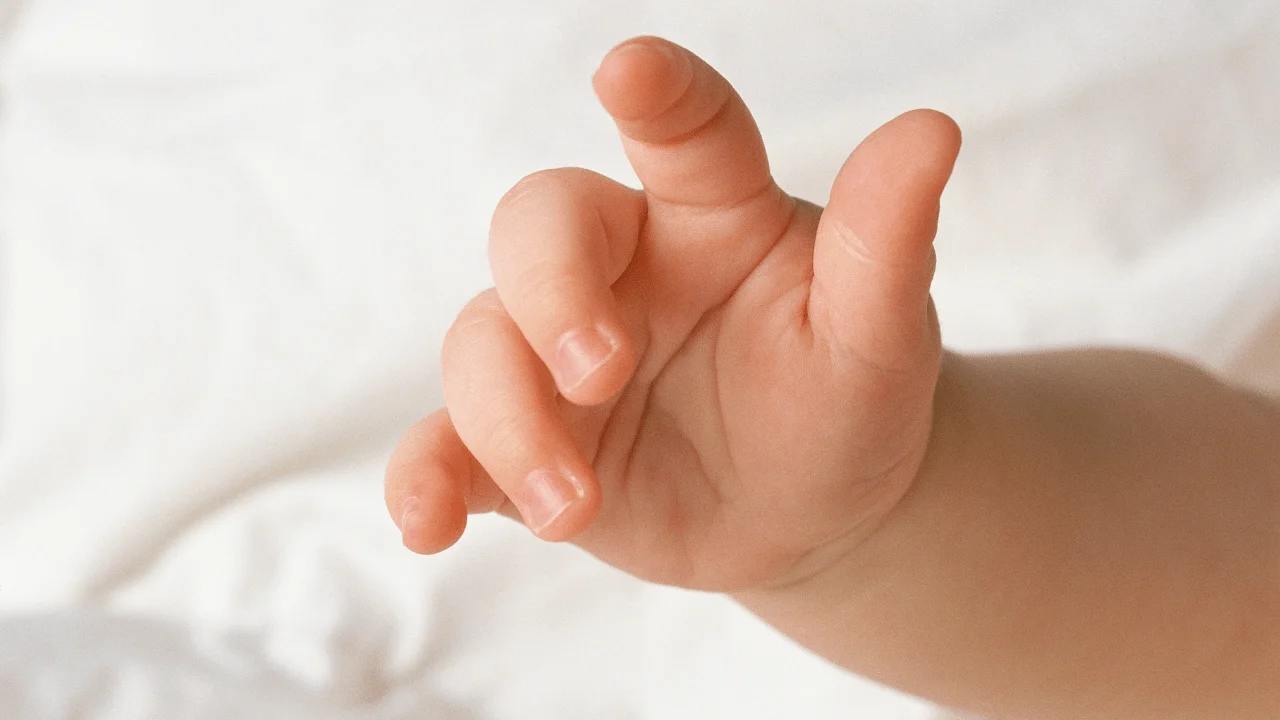
Sign language! You can start teaching your baby sign language as early as 6 months old. Sign language for babies is especially helpful when your baby’s eager to tell you what they want, but can’t do it in words. Benefits of baby sign language include less frustration for your baby and increased communication and bonding for you both. There are several good baby signs to start with, including “drink,” “more,” and “please.”
IN THIS ARTICLE
- How baby sign language works
- Benefits of baby sign language
- How to teach baby sign language
- Signs to teach your baby
How baby sign language works
Because babies are able to mimic gestures, learning some basic signs can help them communicate their needs to caregivers. Many parents start teaching baby sign language as a way to communicate before their baby can talk.
It’s not surprising that babies can learn how to sign. Both their understanding of language and their motor skills develop much faster than their ability to speak. And they love to mimic: Most babies, for example, discover how to wave and point long before they can say, “bye bye” or “look at that!”
The gap between when babies understand language and know what they want, and when they can actually make their wants known by speaking, can be very frustrating for babies and their parents. While teaching baby sign language doesn’t promise to put an end to tears or tantrums, it may help.
Benefits of baby sign language
Benefits of baby sign language can include less frustration for your baby (and you), better communication, and a means of bonding.
Parents may worry that teaching baby sign language will interfere with normal speech development, but there’s no research to suggest that’s true. Some specialists even believe that signing may improve language learning and vocabulary. At the very least, signing helps your baby communicate months before they’re stringing together words.
Signing can also give your child a sense of independence and confidence in being able to communicate their wants and needs.
Sign language for babies is about enhancing (not replacing) verbal language. Signs have to be used with speech so your baby can make the link between the gesture and the word.
When your baby can sign, communication becomes a two-way interaction with gestures and words. For example, if they make the sign for a drink, you can verbally respond, “Would you like a drink? Are you thirsty for a drink? Let me get you something to drink!”
This way, you’ll likely spend more time talking to your child, which is one of the best ways to help with their speech development. And because your baby’s looking at you, they’re concentrating hard on what you’re saying as well as on what you’re doing.
How to teach baby sign language
As with any new skill, it’s important to go at your baby’s pace. You can start teaching your baby sign language by introducing them to signs around 6 to 7 months old, but your baby probably won’t use signs until around 8 or 9 months old. At this age, you may notice your baby is more sociable and uses noises and facial expressions to get your attention.
Start with a sign for something your baby is interested in. Lots of babies quickly pick up the sign for “more” in relation to food!
Every time you use the word, show your baby the sign, too. Equally important is to say the word out loud when you sign, or when you recognize your baby’s sign, so they can learn the word along with the sign.
Always use the same sign for a particular word, use lots of repetition, and emphasize the key word along with the sign, so your baby can clearly see and hear the connection. For example, say “Do you want some more? You’d like some more? Okay, let’s get you some more!”
Your baby may try the sign themself after a few days, or it may take several weeks – be patient. Make it as fun as you can. Babies are much more likely to learn from something they enjoy doing.
Some tips for teaching your baby sign language:
- Use repetition: Use the same sign, or signs, frequently so your baby can become familiar with the sign and what it means. Make it a habit. A great time to practice is at mealtime, when your baby can learn signs like “eat,” “drink,” and “more,” along with signs for their favorite food.
- Speak the word: Say the word out loud every time you sign. This helps your baby not only become familiar with the sign, but the word associated with it.
- Be patient and have fun: If your baby isn’t picking up on signing as quickly as you’d like, don’t worry. Your baby may need to see a sign repeated many times before they’re able to copy it. Let the process be enjoyable for your baby and yourself.
- Be present: Pay attention to your baby so you can recognize when they’re trying to communicate with you by signing. If you’re distracted and not watching them, you might miss their attempts.
- Use positive reinforcement: When your child signs, reinforce their efforts by responding quickly and positively. Repeat their sign along with the word and attend to their request promptly. Once your baby learns that signing “more” will get them more of something they like, they’ll be more motivated to use that sign.
Signs to teach your baby
Baby sign language isn’t necessarily the same as American Sign Language (ASL).
Different baby sign language experts tend to use different signs. Some recommend using ASL signs when teaching your baby. Others suggest a simplified version of signs designed for babies.
Either approach will do the trick, and there’s no reason why you can’t make up your own signs instead. The truth is, your baby may even adapt what you teach them and sign in a way that’s easier for them. What’s important is that you and your baby learn to communicate together.
There are several books and programs available to help you teach your baby sign language. The key is finding something that works for you. You can start with some of our suggestions here.
Here are some commonly used baby signs:
- Drink: Form your hand in a “C” shape and bring it to your mouth, like drinking from a cup.
- More: Bring the tips of your fingers and your thumb together on each hand, then touch fingertips together.
- Please: Extend your fingers and thumb, with fingers together and thumb out. Then, with your palm facing you, move your hand in a circle on your chest.
- Thank you: With fingers straight up and together and thumb extended out, bring tips of your fingers to your chin, then bring your hand down with the palm up.
- Help: With one hand, make a fist and a thumbs up. Bring the palm of your other hand underneath the fisted one, and move both hands up together.
- Mom: With fingers extended and separated, tap your thumb to your chin.
- Dad: With fingers extended and separated, tap your thumb to your forehead.
- All done: Start with your hands held in front of you with the palms facing in, then turn both hands out.
- Milk: Bring each hand into a closed fist, open hands up, bringing fingers out, then back into closed fists. (This mimics the action of milking a cow.)
- Water: Extend your three center fingers up, keeping your thumb and pinky tucked in together. Tap your index finger to your chin.
- Food/eat: Bring the tips of your fingers and thumb together and tap your mouth.
- Sleep: Put your open hand in front of your forehead, with your palm facing you. As you move your hand down toward the bottom of your face, close your fingers and thumb together and touch your chin.
- Yes: With your hand closed into a fist and turned away from you, rock your fist up and down (like a nodding head). (Or, you can nod your head “yes.”)
- No: Extend your thumb, index, and middle finger out, then move them in quickly together. (You can also just shake your head “no.”)
- Book: Bring your palms together with your thumbs facing up, then open your hands with your pinkies touching, like opening a book.
- Poop: Make both hands into fists and stack them on top of each other, with the thumb of the bottom hand inside the top fist. Pull the bottom hand away, leaving the thumb extended.
- Hurt: Extend each index finger and touch them together.
Read more about


Add a Comment